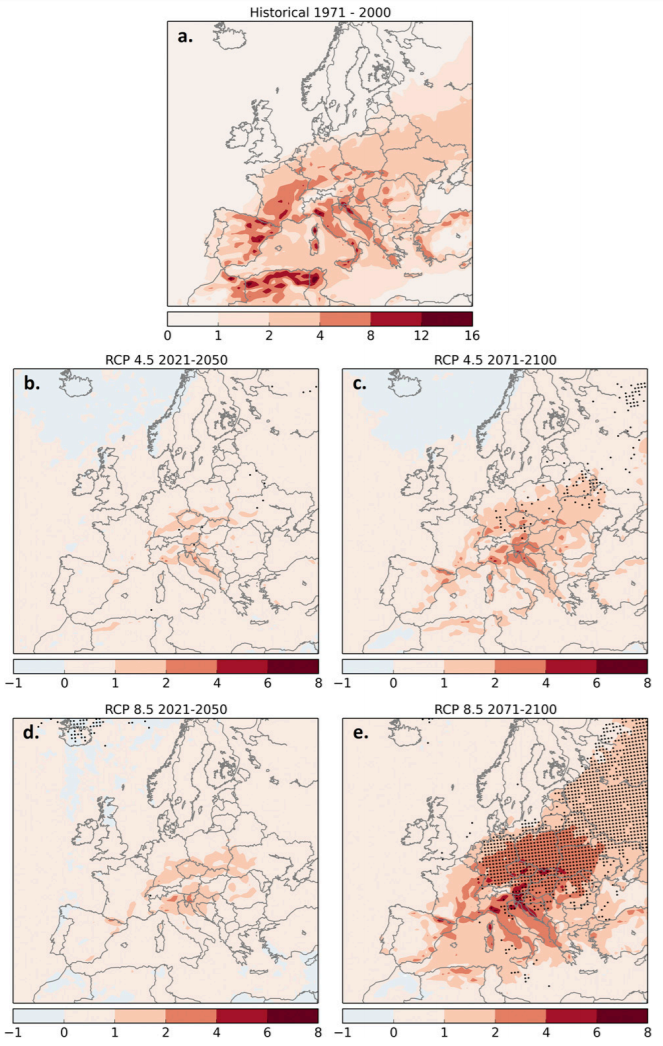A new study led by ESSL researcher Dr. Tomáš Púčik shows how climate change will affect weather conditions responsible for severe thunderstorms. In the study, which has appeared in the Journal of Climate, no fewer that 14 regional climate models were studied. Because climate models are still too coarse to simulate convective storms directly, the researchers looked how often the three necessary ingredients for severe storms occur: unstable conditions, a strong change of wind with height, and a mechanism to trigger the storms.
The climate models predict that strongly unstable situations will occur more frequently, because the water vapour content in the lowest air layers will increase. At the same time, the wind shear, a factor important for the development of well-organized supercells, will not change much. As a result, severe convective storms are forecast to occur more frequently, with the strongest increases scenario with higher greenhouse gas emissions.
The increase is not geographically uniform and considerable uncertainty remains about the future changes in severe convective storm frequency over southwestern and southern Europe, due to a drying in the summer season.
The full open-access article can be downloaded here:

Present annual number of 6-hourly periods with high instability, strong wind shear and precipitation in the period 1971-2000 (a) and the changes expected in two future periods according to a scenario of moderate climate change (rcp4.5, b. and c.) and strong climate change (rcp8.5, d. and e.).
